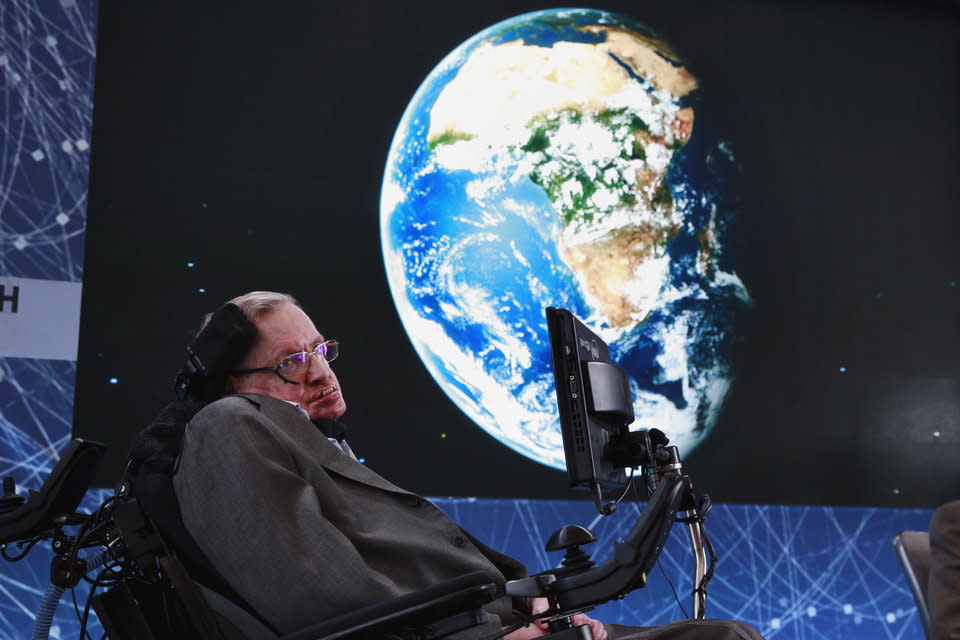Stephen Hawking’s last theory could help us find proof of a parallel universe

Stephen Hawking’s final theory was published this week – and it raises the possibility we could one day detect traces of other universes using space telescopes on Earth.
Professor Hawking worked on the theory with Professor Thomas Hertog from KU Leuven – and it predicts that the universe is finite, not infinite, and simpler than we thought.
Hertog believes that the new theory (which rules out the idea of an infinite number of universes) might allow us to detect traces of other ‘pocket universes’ in the cosmic background radiation left over from the Big Bang.
Many theories of the Big Bang predict that our local universe came into existence with a brief burst of incredibly rapid ‘inflation’.
MOST POPULAR TODAY ON YAHOO
Donald Trump’s lawyer reveals President repaid hush money given to porn star Stormy Daniels
Couple accused of murdering nanny ‘had sex as her body lay nearby’
The most polluted towns and cities in the UK have been named and the list will surprise you
Two reception pupils escape school by climbing 6ft fence to walk a mile to grandmother’s house
In some areas of the universe, the inflation hasn’t stopped – but we live in a pocket where inflation has ended, and stars and galaxies have formed.
Hawking said in an interview last year, ‘The usual theory of eternal inflation predicts that globally our universe is like an infinite fractal, with a mosaic of different pocket universes, separated by an inflating ocean.
‘The local laws of physics and chemistry can differ from one pocket universe to another, which together would form a multiverse. But I have never been a fan of the multiverse. If the scale of different universes in the multiverse is large or infinite the theory can’t be tested. ‘
In their new paper, Hawking and Hertog say this account of eternal inflation as a theory of the big bang is wrong.
Hawking said, ‘We predict that our universe, on the largest scales, is reasonably smooth and globally finite. So it is not a fractal structure.’

‘We are not down to a single, unique universe, but our findings imply a significant reduction of the multiverse, to a much smaller range of possible universes,’ said Hawking.
This makes the theory more predictive and testable – and could mean that in future, scientists could detect traces of other ‘pocket universes’.
Hertog now plans to study the implications of the new theory on smaller scales that are within reach of our space telescopes.
He believes that primordial gravitational waves – ripples in spacetime – generated at the exit from eternal inflation constitute the most promising ‘smoking gun’ to test the model.
The expansion of our universe since the beginning means such gravitational waves would have very long wavelengths, outside the range of the current LIGO detectors.
But they might be heard by the planned European space-based gravitational wave observatory, LISA, or seen in future experiments measuring the cosmic microwave background.


